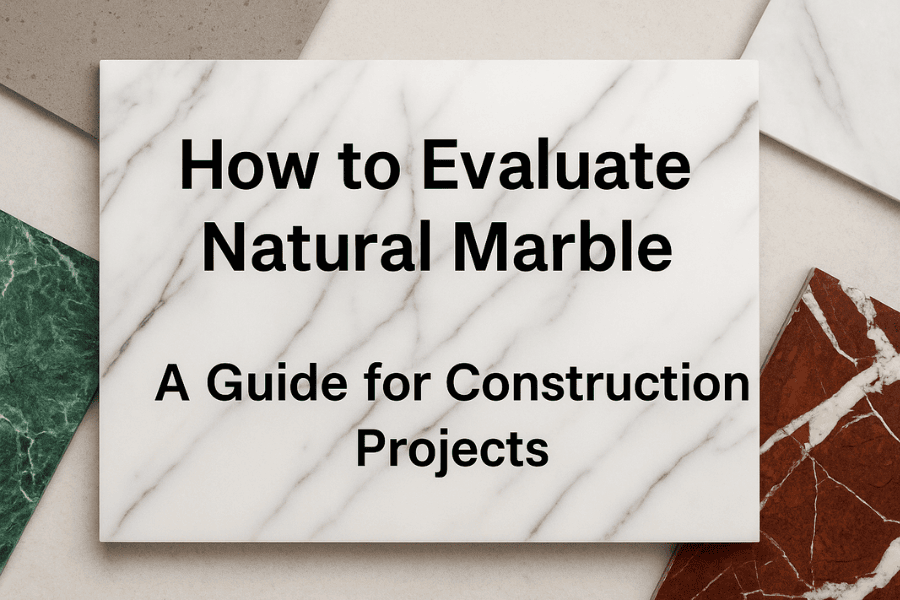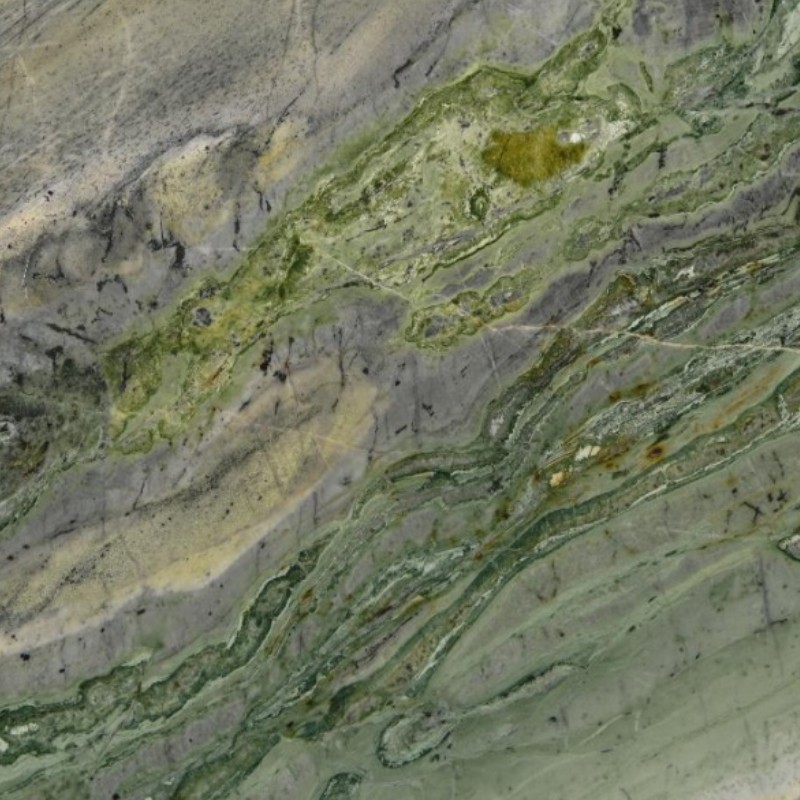A Conversation That Redefined Durability
“We’re rebuilding the lobby, but I don’t want just any marble,” said the project manager from Toronto.
“Then start with science, not color,” replied the architect, flipping through a stack of test reports.
That moment summed up the modern design dilemma — luxury must now prove its durability.
For decades, marble was chosen for its visual appeal. But in today’s construction industry, where Triple H Concrete Products clients expect both performance and permanence, material science has become part of the design vocabulary. Whether it’s flooring, wall cladding, or exterior façades, understanding how marble behaves under stress, moisture, and time can make the difference between elegance and endurance.
Below, we unpack how to evaluate natural marble scientifically and aesthetically, using ICE STONE’s benchmark testing and case research as practical guidance.

Marble.
The New Approach: Choosing by Performance, Not Just Pattern
Aesthetic beauty is only half the story. Modern construction standards increasingly rely on quantitative data — absorption rate, compressive strength, and gloss retention — all of which affect long-term value.
For example, ASTM C97 (Water Absorption and Density) tests reveal that calcite-rich marbles absorb between 0.2–0.4% of their weight in water, while dolomitic and serpentinite types are denser and more moisture-resistant. This distinction determines where each stone performs best — kitchens, façades, or high-traffic public areas.
A particularly stable performer is the China Antique Green Marble, known for its metamorphic density and low porosity. In ICE STONE’s field applications, this material maintained both polish and color saturation even in coastal humidity conditions, outperforming several synthetic alternatives in gloss retention tests.
Color Chemistry: Why Mineral Composition Matters
Beyond beauty, color reflects chemistry — and chemistry dictates maintenance.
-
White marbles, such as Italian Dover White Marble, are composed primarily of calcite, giving them superior light reflectivity but higher sensitivity to acids.
-
Green marbles, often serpentine-based, contain magnesium silicate minerals that provide excellent resistance to etching and thermal variation.
-
Violet and gold veining, as seen in Calacatta Viola and Calacatta Gold Marbles, are formed by iron oxide intrusions — they’re visually stunning but demand precise sealing to prevent oxidation.
These distinctions aren’t just visual trivia; they guide project engineers toward smarter specifications. According to the European Stone Trade Association (ESTA) 2024 material performance bulletin, marble color families can vary up to 35% in compressive strength depending on mineral content. In practical terms, that means design teams must pair beauty with balance — matching mineral science to the space’s actual load and exposure.
Material Insight: What Makes Marble So UniqueBefore choosing the right marble for your project, it helps to understand what this timeless material truly is. Geologically, marble forms when limestone or dolostone undergoes intense heat and pressure — a process called metamorphism. This transforms soft sedimentary stone into a crystalline mosaic of calcite or dolomite, giving marble its strength, polish, and signature veining.
1. Origin and Composition
Natural marble may include trace minerals like iron oxides, silica, or serpentine, which create unique color variations — from brilliant whites to deep greens and even purples. These impurities are what make each slab distinct and unrepeatable.
2. Global Sources and Heritage
Major marble-producing regions include Italy, China, Spain, and India, each known for particular color families and mineral characteristics. For instance, Carrara’s fine-grained white marble is prized for sculpture, while Asian serpentinite greens are favored for their low porosity and chemical resistance.
3. Physical Performance
Marble is both hard and polishable, but softer and more porous than granite. It resists compression well yet can be etched by acids if left unsealed. Regular sealing, neutral cleaners, and controlled humidity dramatically extend its lifespan.
4. Aesthetic Diversity
From Calacatta and Statuario to Ming Green and Antique Verde, marble presents a spectrum of hues and veining patterns determined by mineral content. Finishes also alter its visual tone: polished surfaces enhance light reflection, while honed or leathered textures create a more organic, matte appearance.
5. Engineered Alternatives
Quartz and porcelain slabs may mimic marble visually, but lack its thermal and tactile authenticity. For high-traffic or sustainable builds, combining natural marble with reinforced concrete systems often yields the ideal balance between durability and artistry — a principle ICE STONE continues to pioneer.
Structure Meets Sustainability
One of the biggest shifts in global stone use is the move toward sustainable sourcing and long lifecycle performance.
ICE STONE’s quarry-to-block approach uses digital scanning to track density and fracture uniformity before cutting. This allows architects to specify Marble Blocks by both mechanical data and visual grade, ensuring consistent slabs for large commercial projects.
ESTA’s 2025 report highlighted this practice as a model for responsible extraction — achieving a 15% reduction in material waste and extending average slab service life by 12–15 years.
Sustainability also extends to post-installation behavior. Laboratory abrasion tests (ASTM C241) show that dense, magnesium-rich stones retain up to 90% of their original gloss after five years in high-traffic environments. For facility managers, this equates to fewer resealing cycles and lower maintenance emissions over time — a critical factor in LEED and BREEAM certifications.
Beyond the Surface: Engineering the “Feel” of Marble
Designers often describe marble as “alive” — its texture changes subtly under different light and temperature. That tactile evolution comes from micro-crystal reorientation when exposed to heat and pressure.
ICE STONE’s research with Calacatta Verde Marble demonstrates this perfectly. When installed in a hotel atrium exposed to sunlight for 18 months, the stone’s tone deepened slightly while its gloss remained stable — creating what the project called “living luminosity.”
This combination of resilience and organic change is what makes marble unique among architectural materials. In contrast, engineered surfaces may mimic the look, but they lack the thermal and optical behavior that makes natural stone so responsive to environment.

Calacatta Verde Marble
Case Study: The Ming Green Standard
Not all “green” marbles perform equally. In 2025, ICE STONE’s testing team compared various serpentinite-based stones across water absorption, flexural strength, and acid resistance benchmarks. The standout result came from Ming Green Marble — achieving a 0.18% absorption rate and maintaining its finish after repeated citric acid exposure.
Its superior performance is attributed to micro-grained mineral uniformity, verified through petrographic thin-section analysis. This fine structure makes it ideal for wellness centers, spas, and humid spaces where aesthetics and stability must coexist.
As ESTA summarized in its 2025 Material Integrity Report:
“Green serpentinites represent the evolution of luxury — they embody sustainability through endurance, not replication.”
How to Specify Marble Like a Professional
For architects, builders, and designers working with Triple H Concrete Products, specifying marble can be simplified into five data-backed steps:
-
Identify the Environment: Interior or exterior, wet or dry, residential or commercial.
-
Check Mineral Composition: Calcite vs. dolomite vs. serpentinite — this determines behavior under acid and heat.
-
Use Standardized Testing: Review ASTM results (C97, C99, C241) for absorption, flexural, and abrasion performance.
-
Select Finish by Function: Polished for walls, honed for floors, brushed for outdoor non-slip applications.
-
Verify Source Traceability: Ensure slabs come from certified quarries with consistent density and carbon reporting.

Four Season Grey Project
FAQ
1. What’s the difference between calcitic and dolomitic marble?
Calcitic marbles are brighter and easier to polish but softer; dolomitic marbles are denser and more resistant to weathering.
2. How often should marble be resealed?
Every 12–18 months depending on exposure. In humid environments, biannual sealing maintains long-term gloss.
3. Which marble performs best in commercial spaces?
Serpentinite-based marbles like Ming Green and Antique Green perform best due to low porosity and chemical resistance.
4. Can natural marble be considered sustainable?
Yes. When properly sourced and maintained, its lifecycle exceeds 50 years with minimal replacement waste.
5. What tests confirm marble quality?
Look for ASTM C97 (absorption), ASTM C99 (flexural strength), and ASTM C241 (abrasion) data for a reliable performance profile.
📚 References
-
ASTM International. C97/C97M – Standard Test Methods for Absorption and Bulk Specific Gravity of Dimension Stone.
-
ASTM International. C241 – Standard Test Method for Abrasion Resistance of Stone Subjected to Foot Traffic.
-
European Stone Trade Association (ESTA). Annual Report on Sustainable Quarrying and Material Performance, 2024 Edition.
-
Marble Institute of America (MIA). Natural Stone Design Manual, 2023 Edition.
-
U.S. Geological Survey (USGS). Dimension Stone Statistics and Characteristics Report, 2024.
-
Politecnico di Milano – Dr. Lucia Moretti. Surface Behavior of Calcitic and Serpentinite Marbles Under Variable Humidity Conditions.
-
Building Research Establishment (BRE), United Kingdom. Natural Stone Durability Assessment and Environmental Performance in Architecture.
-
ICE STONE Research Division. Comparative Field Study on Gloss Retention and Absorption of Calacatta and Ming Green Marbles, 2025.
-
Sustainability in Stone Symposium (Zurich). Life-Cycle Analysis of Natural Marble and Engineered Alternatives.
-
Francini Marble & Granite Technical Notes. Global Production, Physical Properties, and Care of Natural Marble, 2023.
In the age of performance-driven design, selecting marble is no longer a matter of taste—it’s an informed engineering decision. When architects combine tactile artistry with measurable science, natural stone becomes more than decoration; it becomes a long-term structural investment in both form and function.
Feature Product
-
 Four Season Grey Natural Marble Slabs and Tiles
Four Season Grey Natural Marble Slabs and TilesThe Charm of Four Season Pink Good size for ...
-
 Panda Green White Luxurious Quartzite Stone
Panda Green White Luxurious Quartzite StoneArtistic Conception Like moonlight piercing ...
-
 Vivid Brilliant Natural Marble of Prague Green
Vivid Brilliant Natural Marble of Prague GreenHow to pack and load ? 1. Fumigated wooden b...





